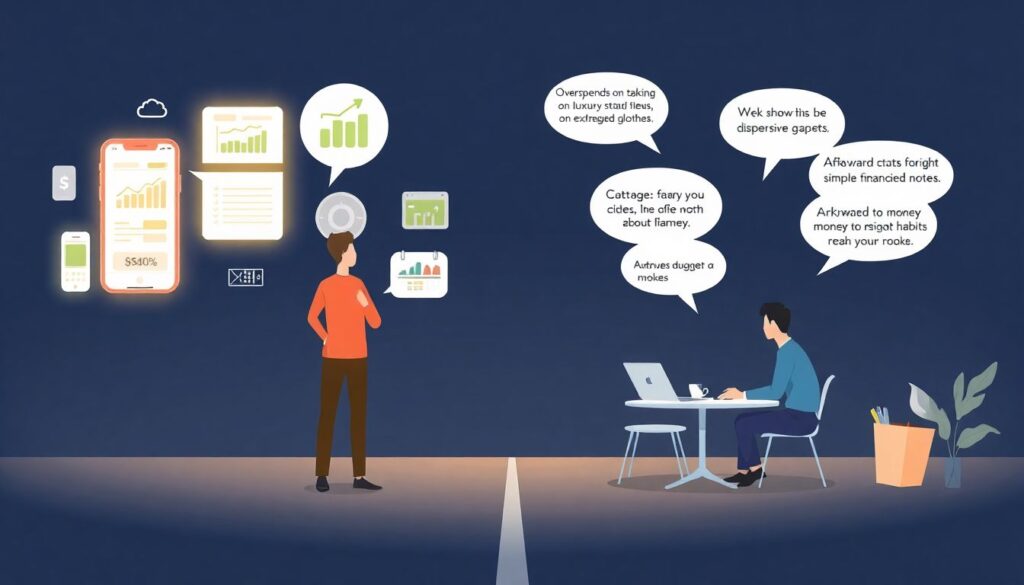Why Value-Based Budgeting Is Different From “Just Saving Money”
Most beginner budgets start with one question: “Where can I cut back?” Value-based budgeting flips that around and instead asks: “What’s genuinely worth paying for in my life?” The idea is simple: you match your money to your values first, then adjust everything else. This approach isn’t just feel‑good rhetoric. Surveys from the CFPB and other regulators show that people who connect spending to personal goals are 2–3 times more likely to stick with a plan for at least 12 months. In a world where over 60% of households report living paycheck to paycheck at least part of the year, any framework that improves follow‑through is economically relevant, not just psychologically comforting.
The Economic Logic: Why Intentional Spending Works
From an economic point of view, value-based budgeting is about maximizing “utility” rather than cutting costs at any price. Traditional budgeting often leads to decision fatigue: endless small choices that drain willpower. When you assign each dollar a “job” linked to a value—security, freedom, learning, family time—you reduce randomness and impulse purchases. Behavioral economists point out that we chronically underestimate small recurring costs; a $20 weekly delivery habit quietly becomes a four‑figure annual leak. By consciously ranking your categories, you reallocate that invisible leakage into areas that deliver higher long‑term satisfaction, such as debt payoff or skill building, which in turn improves your future earning power and financial resilience.
How to Start Value Based Budgeting Without Overcomplicating It
You don’t need a giant spreadsheet to figure out how to start value based budgeting. Start with three buckets: “Non‑negotiable,” “Important but flexible,” and “Nice to have.” Non‑negotiables are housing, basic food, minimum debt payments, and healthcare. Important but flexible includes savings, investments, education, and experiences that matter deeply to you. Nice‑to‑have is everything else. The key is to write down, in plain language, why each category exists. For instance: “Travel: I want at least one trip a year where I fully unplug; this matters more than eating out on weekdays.” Once your “why” is clear, you can rapidly see what must shrink to make room for what truly matters, turning budgeting from punishment into informed trade‑offs.
Practical 5‑Step Framework for Your First Value-Based Budget
Here’s a structured yet doable way to get started and keep things practical rather than theoretical:
1. List your top 5 values
2. Map each value to 1–3 spending categories
3. Track your actual spending for 30 days
4. Compare the reality to your value map
5. Adjust categories and automate key transfers
This isn’t a one‑time project; it’s a feedback loop. As your career, family, and health situation evolve, the mix of categories will shift. Forecasts from major fintech providers suggest that by 2030, more than half of personal finance tools will use real‑time behavioral data to auto‑classify transactions by “intent” rather than merchant type. Getting comfortable now with thinking of your money in terms of values, not just line items, puts you slightly ahead of where the tech is already heading.
Tools, Apps and the Rise of Intentional Money Tech
The industry has noticed that beginners don’t just want math; they want meaning. That’s why almost every modern value based budgeting app is trying to integrate goal tracking, life milestones, and even prompts about how a purchase aligns with priorities. The personal finance app market has been growing in the high single digits annually, and a growing segment is focused specifically on goals, not merely tracking. For a beginner, this means you can lean on automation: set up categories named after values (“Security,” “Adventure,” “Learning”), assign target percentages, and let the software nudge you when your behavior drifts. This reduces the cognitive load and shrinks the gap between what you say you care about and what your bank statement shows at the end of the month.
Human Help vs. DIY: When to Get a Coach

Tech can take you far, but not all decisions are purely numerical. If you find yourself stuck in the same loops—like repeatedly overspending on status purchases or struggling to talk about money with a partner—it may be worth searching for a personal budgeting coach near me instead of only downloading more apps. A competent coach can help you articulate deeper values (autonomy, generosity, stability) and then design constraints that fit your real life, not some idealized version of it. Economically, paying a few hundred dollars for structured guidance can be rational if it helps you avoid costly mistakes: late fees, high‑interest debt cycles, or chronic under‑saving for retirement, where every delayed year can cost tens of thousands in lost compound growth.
Courses, Skills and the Future of Financial Education

We’re also seeing a shift from generic money tips toward skills‑based learning. A focused value based budgeting course often combines psychology, basic economics, and practical tools into a short, repeatable framework. For beginners, this can be more effective than binge‑watching random videos because it imposes structure and practice. Looking forward, market analysts expect the personal finance education sector to keep expanding as employers, schools, and even health insurers recognize that money stress directly affects productivity and well‑being. In other words, value‑aligned budgeting is slowly moving from a niche hobby to part of mainstream financial literacy, with measurable impacts on default rates, emergency savings levels, and consumer confidence.
Beginner Tech Stack: Making the System Work for You

If you’re just getting started, you don’t need a complex setup; you need the best budgeting tools for beginners that minimize friction. That usually means three elements working together: an app for tracking and automation, one account for long‑term goals, and a simple check‑in routine. Connect your accounts once, categorize a month of spending, create rules that mirror your values (for example, automatically moving any “extra” income into your top‑priority category), and then schedule a brief weekly review. Over time, those twenty‑minute reviews have an outsized macro effect on your personal economy: fewer spur‑of‑the‑moment purchases, slower lifestyle inflation as your income grows, and a rising savings rate that translates into real options—changing jobs, moving cities, starting a business—because your finances support, rather than constrain, what you actually want.
Pulling It Together: A Budget That Feels Like You
At its core, value-based budgeting for beginners is about making your day‑to‑day spending reflect the kind of life you say you’re building. Instead of obsessing over perfection, aim for progress: a little less money drifting into low‑value habits, a little more going into areas that genuinely move the needle for you. Whether you use a slick new platform, a basic spreadsheet, or guidance from a coach, the method works because it respects both the numbers and the human behind them. And while tools and trends will keep evolving, that simple alignment—money flowing toward what matters most—remains the most durable “feature” in any financial plan.

